Google Hangouts Meet Divisible Conference Room with Beamtracking Microphones
This Google Certified design template shows how Biamp Tesira TCM-series AVB Beamtracking™ Ceiling Mics can be paired with a Google Hangouts Meet kit to support a large divisible conference room space. In this document, a large conference room is defined as a meeting space about 33' x 14' with around 18-21 participants. Each conference room is separated by a collapsible wall that can be opened or closed based on the needs of the space. HID communication between the Google Hangouts Meet system and the Tesira EX-UBT USB interface provides a truly integrated experience with USB connection status and mute status feedback passing through to the TCM-1 pendant microphones.
Room design
Room Functionality Scope:
- Two large conference rooms with the ability to be combined into a single meeting space.
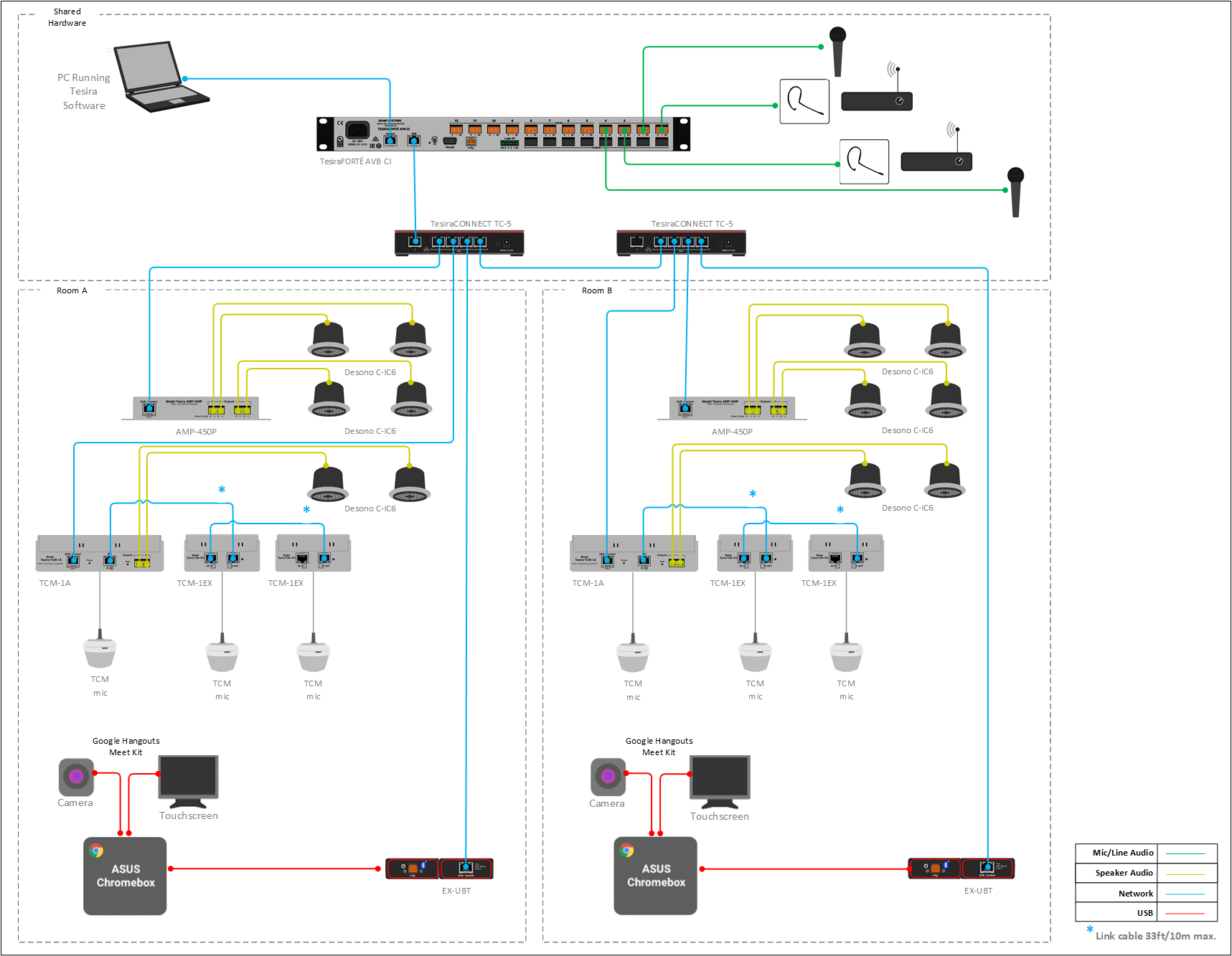
- Six ceiling pendant microphones with beamtracking technology (3 in each space when separated)
- USB connection to Google Hangouts Meet Kit for each room
- Four wireless microphones for both conferencing and local voice reinforcement (2 in each space when separated)
- Ceiling speakers for playback of local presentation and far end audio sources
Equipment list
Below is the list of Biamp equipment used in this project:
- 1 - TesiraFORTÉ AVB CI 12 mic/line level inputs with AEC; 8 mic/line level outputs
- 2 - Tesira TCM-1A AVB beamtracking ceiling microphone, with integrated 2-CH amplifier
- 4 - Tesira TCM-1 EX Extension beamtracking ceiling microphone
- 2 - Tesira AMP-450P 4-CH PoE+ amplifier providing 4x 50 Watts burst power
- 2 - Tesira EX-UBT USB over AVB interface, supporting up to 8 channels of configurable USB audio and Bluetooth wireless technology
- 2 - TesiraCONNECT TC-5 Up to 5 Tesira devices connected, no configuration required, 4 PoE+ ports, configured from the Tesira software
- 12 - Desono C-IC6 Wide coverage ceiling speaker (dispersion angle of 130°) optimized for voice reproduction
Note that other non-Biamp equipment is required, such as an optional control network switch, wireless microphones, and Google Hangouts Meet Kit hardware.
Networking details
This application will make use of PoE+ powered endpoints which connect to the TesiraFORTÉ AVB CI and exchange AVB audio and control data. Regarding cable types and lengths, the common rules to gigabit Ethernet cabling do apply. The simplest way to realize a functioning system is using a converged single cable network on one AVB switch as shown in the drawing above. For a detailed guide on this, and the range of other supported network topologies, it would be helpful to reference this article.
Setup Requirements:
- Use an AVB-enabled network switch with sufficient number of ports (7) and PoE+ (IEEE802.3at) support, to interconnect all devices.
- Optional 802.3at (Class 4) PoE+ injector for powering each the EX-UBT, AMP-450P, and the TCM-1A
- A standard network cable (Cat.5 or higher) to connect the TCM-1A with the TCM-1EX extension microphones.
- Do not exceed 33ft or 10m on this link
- This is a proprietary digital audio link, not compatible with Ethernet
- Note that the TCM-1A, EX-UBT, and the AMP-450P use Layer 2 AVB for audio and control data, IP address setup is not required.
Once the required control and AVB connections are made, you will now be ready to send your compiled system configuration to the hardware.
System configuration
The example file for this system design template is set up with all the audio I/O, processing, and control points required, and is ready to load to the system and begin setting up the room gain structure and EQ. In the file, the matrix routing is already in place to support the room design requirements. Ten AEC processing channels on the TesiraFORTÉ AVB CI will be occupied by the TCM-1 microphones and four wireless microphones. The first two analog inputs are used for Room A wireless microphone connections. Analog inputs 3 and 4 are used for the Room B wireless microphone connections.The twelve loudspeakers will be connected across the channels of the two TCM-1As and two AMP-450Ps.
To support the conferencing needs of the space, the microphone signals are routed to the USB output. All AEC references have been made in the matrix mixer for proper echo cancelation of the far end audio. The room combiner functionality will ensure that AEC reference routes are updated based on the current room configuration. The file's Equipment Table is populated with proper hardware to match the layout, but will need to have serial numbers and proxy host assignments added before loading the file to system.
To assist with deployment and commissioning of systems which include the Desono C-IC6, a Tesira Library File (.tlf) has been created. This includes a custom block with Biamp's recommended EQ curves to optimize the sound of the C-IC6 loudspeaker. This custom block has been included in the system design template.
Tesira software and firmware version 3.14 includes a new Parlé Custom Processing catalog that is a pre-configured signal processing block necessary to properly utilize the Parlé Beamtracking series of microphones in a divisible conference room setup. The attached design template file utilizes this processing block in the configuration to allow Parlé processing to also incorporate the Automixer combiner block.
The .zip file below contains the example Tesira configuration files for this conference room application.
Google Hangouts Meet Divisible Conference Room.zip
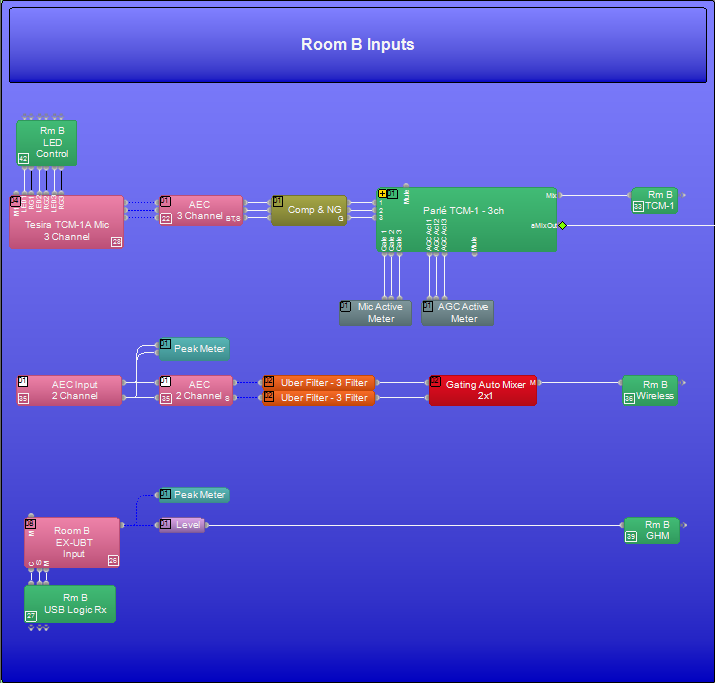
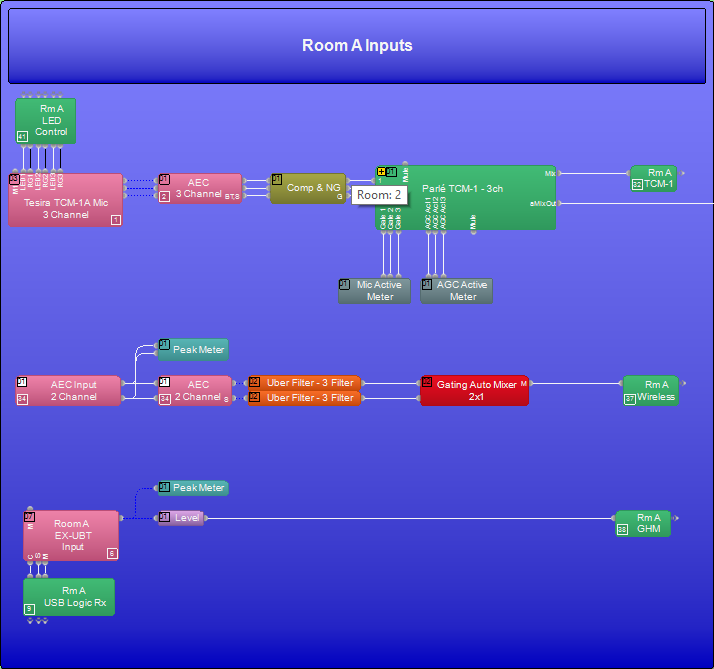
Setting the audio device from Google Hangouts Meet
Once the configuration file has been loaded to the system, the EX-UBT will be available as an audio peripheral device from the Google Hangouts Meet user interface. To select the EX-UBT, navigate to the Settings menu on the Google Hangouts Meet user interface.
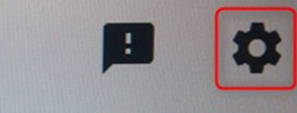
From the Audio menu, use the Microphone and Speaker dropdowns to select the EX-UBT.
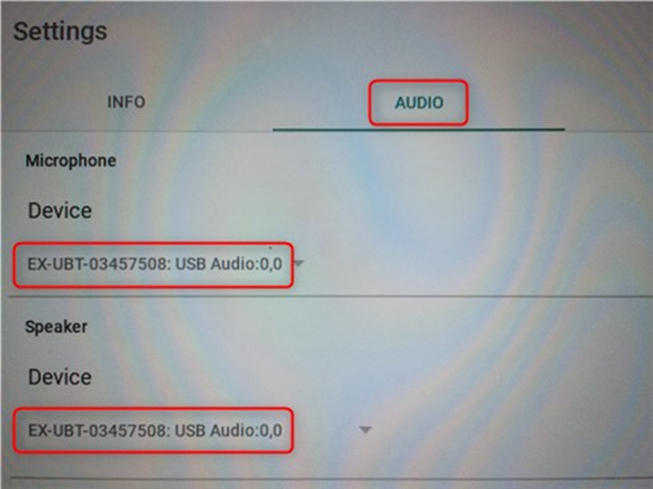
HID communication logic
The EX-UBT synchronizes privacy mute state and volume control when connected to the Google Hangouts Meet kit. This is achieved through Human Interface Device (HID) communication. Within the running Tesira configuration, room level control from the Google Hangouts Meet user interface will sync with the level control in the USB Input block, while privacy mute from the Google Hangouts Meet user interface will sync with the mute control in the USB Output block.
By default, the Google Hangouts Meet volume control will set to 60% when a meeting is started. This level will be reflected in the EX-UBT USB Input block.

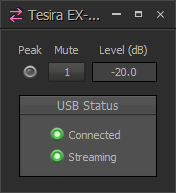
The privacy mute control on the Google Hangouts Meet user interface provides visual feedback to participants in the room by setting the TCM-1 microphone LEDs to green when unmuted and to red when muted. Mute state logic from the USB Output block is used to trigger presets that drive this LED color change. The presets will also support recall from a 3rd party control system.
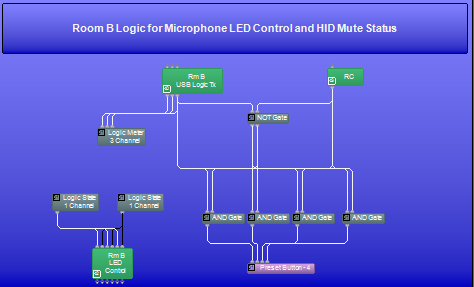
Microphone and speaker placement
The room
Arguably the single most important element in a conference system is the room itself. A noisy and reverberant room will generally sound awful for conferencing. A properly designed room with controlled reverberation and low noise floor will generally sound good for conferencing.
The importance of creating a controlled acoustic environment cannot be overstated. It is important to make the room as quiet as possible (lower noise floor) and minimize reverberance (shorter RT60) in preparation for installing the conferencing system. When properly applied, soundproofing and acoustic treatments will yield dramatic improvements in performance for most rooms.
Microphone placement
Even though the TCM-1 beamtracking microphones use state of the art technology to track a person's voice, while reducing unwanted background noise, the laws of physics 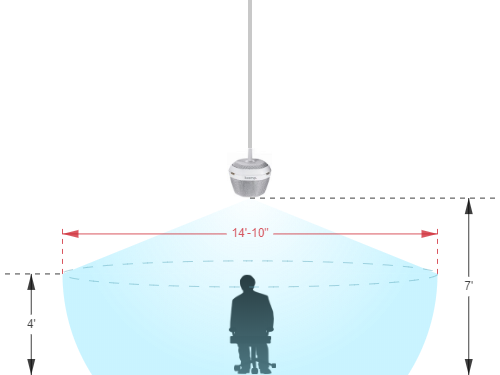 can't be ignored when deciding on the right placement of a microphone. A good signal-to-noise ratio is key in every part of the audio signal chain and for a typical microphone pickup scenario, this translates to avoiding large distances between the mic and the talker. The Parlé ceiling microphone calculator will help to find the right pendant height and required distance between the two pendants for the the expected coverage area. Here are a few more tips to an ideal microphone placement:
can't be ignored when deciding on the right placement of a microphone. A good signal-to-noise ratio is key in every part of the audio signal chain and for a typical microphone pickup scenario, this translates to avoiding large distances between the mic and the talker. The Parlé ceiling microphone calculator will help to find the right pendant height and required distance between the two pendants for the the expected coverage area. Here are a few more tips to an ideal microphone placement:
- Keep the distance to the talker as short as possible.
- Keep the distance to the ceiling speakers as high as possible.
- Stay away from noise sources like projector fans and air vents.
Speaker placement
Placing speakers in a room can be as equally critical as finding the right spot for a microphone. Biamp has provided a Ceiling Speaker Calculator that can be used to determine the coverage required for the desired application. An ideal positioning of multiple ceiling speakers will achieve an even SPL coverage and a good speech intelligibility across the entire room. In order to get a better sense on how much SPL the speaker of choice is able to produce with the given power of our AMP-450P amplifier, the Amplifier Power Calculator will provide some answers. In addition to that, a speaker simulation software might be able to predict the expected in-room STI values.
In this example, the speakers are not being used for voice-lift or similar live speech reinforcement, hence gain before feedback doesn't have to be considered. Still, avoiding short distances between the speakers (far-end audio) and the microphone will help to improve the AEC performance.
Audio setup
- Follow Gain Structure best practices to set input and output levels of microphones and sources. Input and output gain levels have been left at default settings for integration flexibility of the file. Input and Output metering has been added to assist with setting gain structure within the file. Additional meters can be added to the file as required to allow for additional detail at point along the signal path.
- Reference AEC best practices documentation and begin to join some test meetings with the system. ERL values between 0dB and +15dB are optimal.
- Uber Filters have been added to signal paths to allow for any additional equalization as needed. It is recommended to use the advanced filters section of the AEC channel processing block for any high pass filtering needed on conference table microphone inputs. Additional filtering or dynamics blocks may be added or changed as needed to achieve the desired results in the file.
- Far end audio level and privacy mute will can be controlled from the Google Hangouts Meet Kit user interface. Alternately, a 3rd party control system can be utilized for preset recall and room level control.

